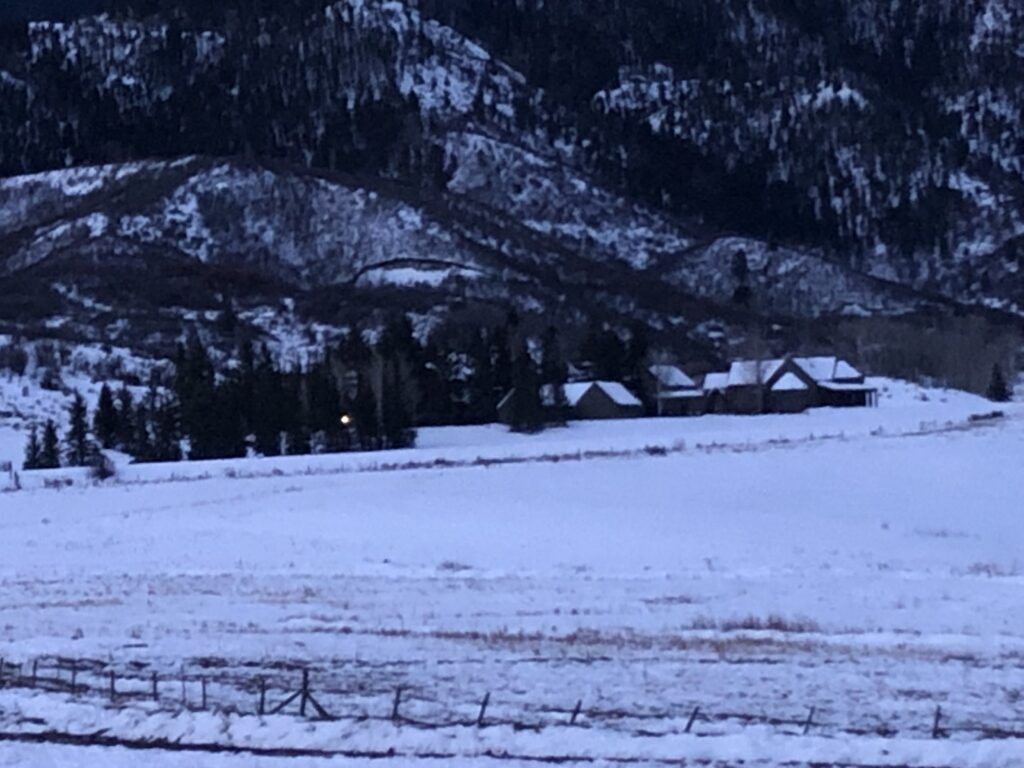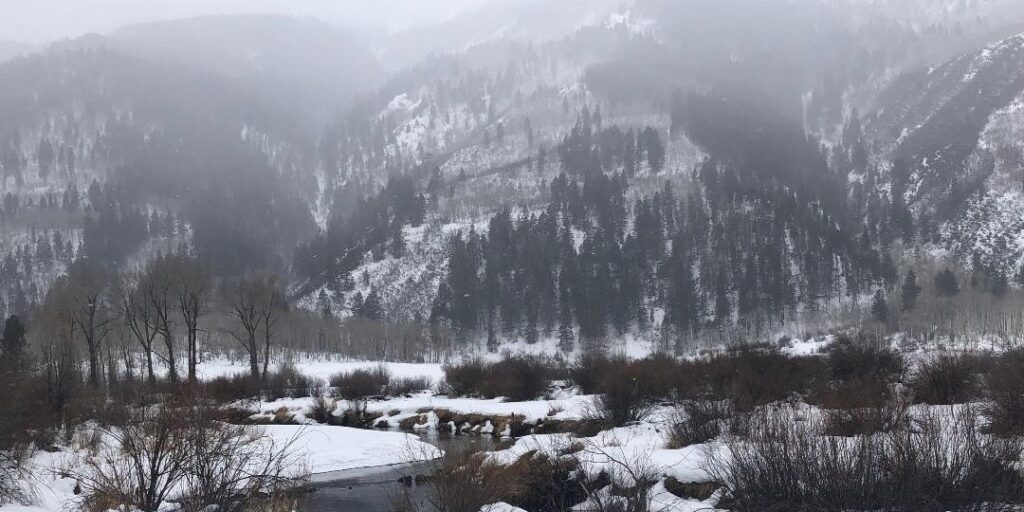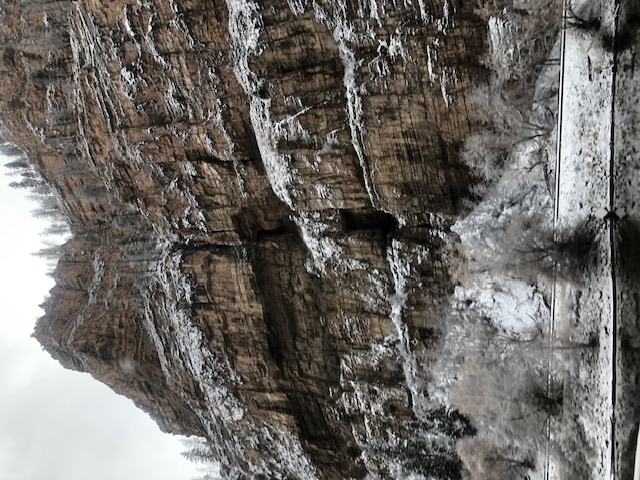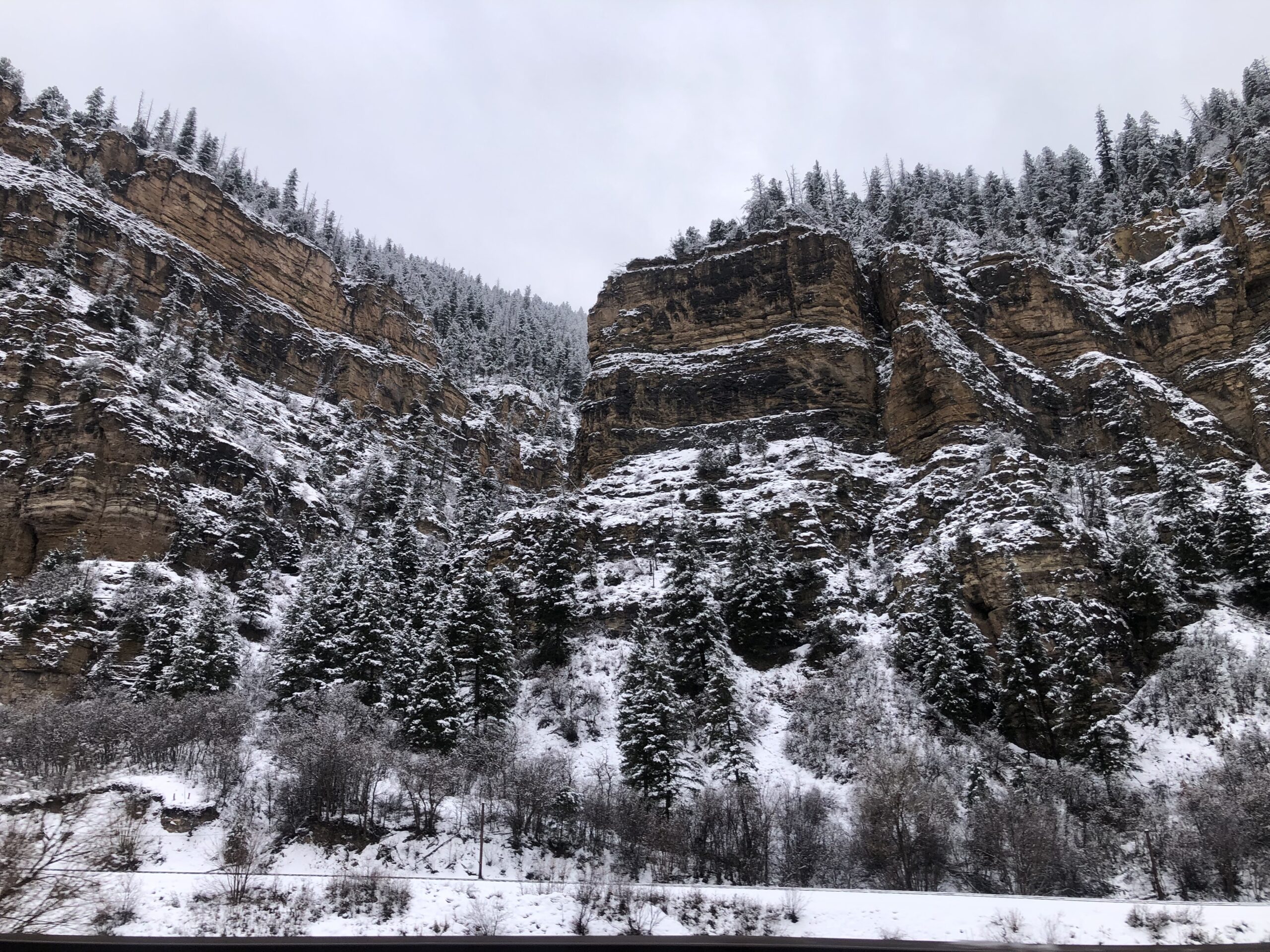Sometimes one can look past a thing and see something else.
It happened after celebrating Christmas Mass with the monks at St. Benedict’s Monastery in Snowmass, lunch in twinkling Aspen, and a snow hike in the North Star Preserve.


On the drive home, late Christmas afternoon, beneath the great, towering stone walls of Glenwood Canyon, something seemed amiss in the snow-dusted cliffs on each side of the highway. Huge slabs of stone were missing from nature’s masterpiece of the sedimentary, igneous, and metamorphic rock faces. I’d seen those gaping places before, but they seemed more apparent just then in the atmospheric conditions of cloud and snow.


Sometimes metaphors pop up when least expected.
Many theories suggest how those gigantic chunks of geologic history seemingly disappeared. Some suggest a single, catastrophic event, while others suggest a smaller, more gradual scenario.
Something called the Great Unconformity accounts for the 1,200 million years of vanished rock in Glenwood Canyon by nothing less than (yup, you guessed it) erosion. That same phenomenon is apparent at the Grand Canyon and Pikes Peak as well. On a global level, some scientists imagine an undoing of a massive supercontinent older than Pangea. We are talking roughly 1 Billion or more years of wear and tear. There’s also something called “faulting” when rock masses fracture and displace under tremendous tectonic force.
And this is significant to the here and now, how?
Because the year is turning—old to new. Because what may be seemingly lost or eroded is always engrained in the memory of our hearts. Because maybe we all share a bit of unconformity, a break from continuity, somewhere in our personal journeys.
As my husband and I drove home through the Canyon, I realized I was gazing upon more than the beautifully-layered-strata of rock history. I was gazing into the synchronicity of shared experience, of marked change and time, growth and transformation.
In reverence for what has been—easy or difficult—joyful or disappointing, I look to the Scottish poet, Robert Burns, and lyrics from his well-known “Auld Lang Syne” which by the way, translate to time gone by.
Should auld acquaintance be forgot,/
And never brought to mind?/
Should auld acquaintance be forgot,/
And days o’ lang syne!/For auld lang syne, my Dear,/
For auld lang syne,/
We’ll tak a cup o’ kindness yet,/
For auld lang syne./
And looking forward with reverence to possibilities and hope:
The soul is a breath of living spirit, that with excellent sensitivity, permeates the entire body to give it life. Just so, the breath of the air makes the earth fruitful. Thus the air is the soul of the earth, moistening it, greening it.
—Hildegard of Bingen
Wishing you that cup of kindness and breath of inspiration for what has been and what will be.
Blessings and grace to you in the New Year.
Thanks for stopping by! ♥
————————————————–
https://www.colorado.edu/today/2020/04/27/GreatUnconformity
https://www.themorgan.org/sites/default/files/images/exhibitions/AuldLangSyne.pdf
